Learn 5 of Alex Lifeson's iconic open-string chords
How the Rush legend’s pioneering approach can help you achieve wider, fuller sounds
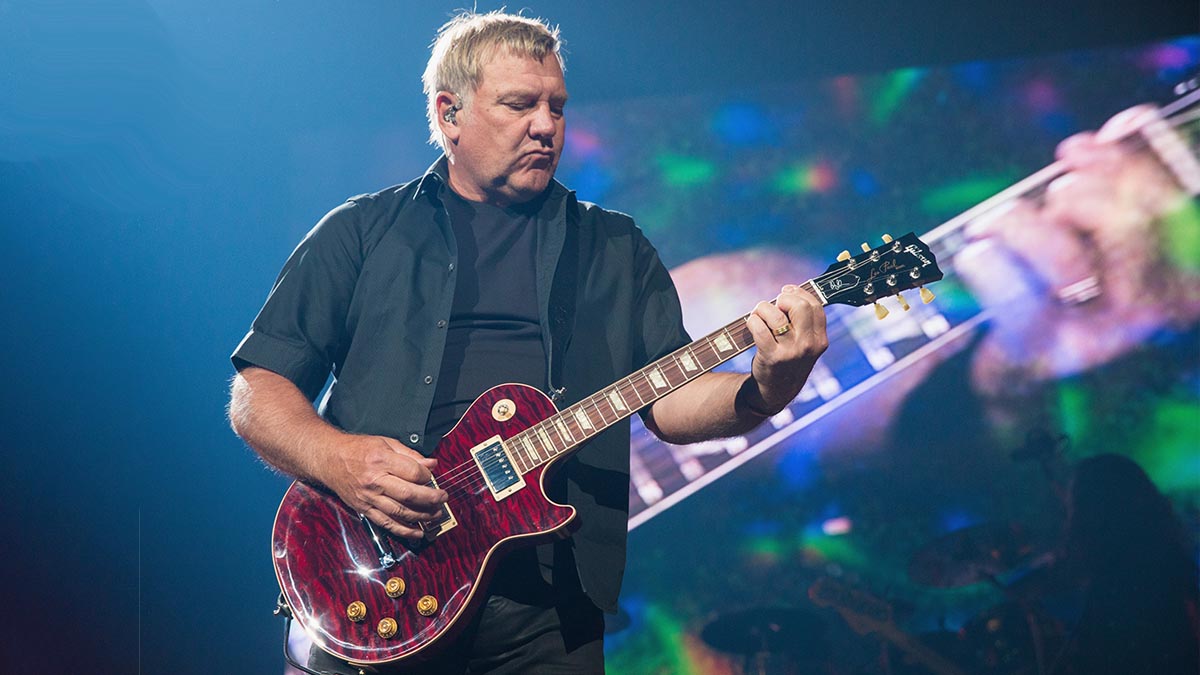
Compared with the piano, the guitar’s potential to play a variety of chords may seem limited, but these supposed restrictions force us to explore its scope for mixing the tones of open and fretted strings, creating unusual voicings that contain scale and chord tones out of sequence, as well as unison ‘drone’ type effects.
In the late 70s, when Rush were closer to their original power trio format than the more heavily layered synths of the 80s, Alex Lifeson pioneered a way to create a fuller, wider sound by incorporating lots of ringing open strings, suspended chords and arpeggiated patterns. This was aided by the relatively new Roland Jazz Chorus amps – primarily for clean tones at first – then the Boss CE-1 to widen the powerchords on Hemispheres.
From a non-theory point of view, try shifting open position chords to higher positions on the fretboard, or removing the barre from barre chords (only holding the lowest note) with the same approach. I will, of course, untangle the ‘theory’ side as much as possible, too!
Example 1
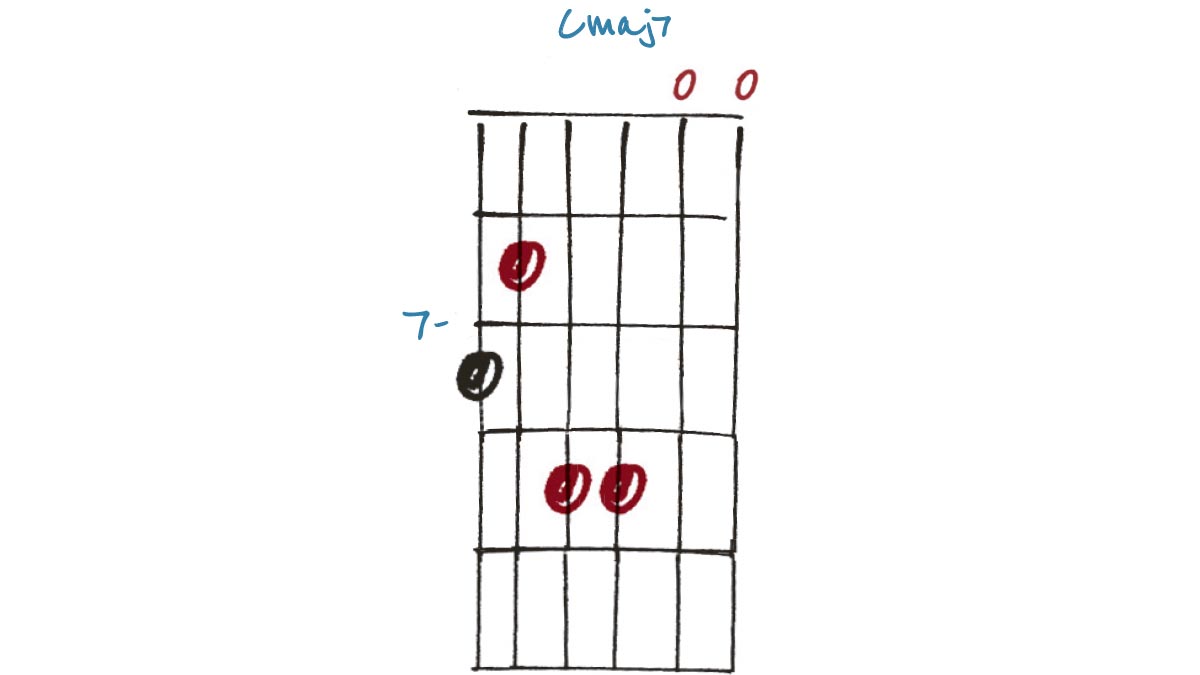
It wouldn’t occur to many of us to play a Cmaj7 like this through a distorted amp, but that’s exactly what Alex did on Jacob’s Ladder, allowing the open first and second strings to ring while forming this jazz-type voicing using the lower four strings.
We’ve jumped in at an advanced level here rather than moving open chords around, but why not?
Example 2
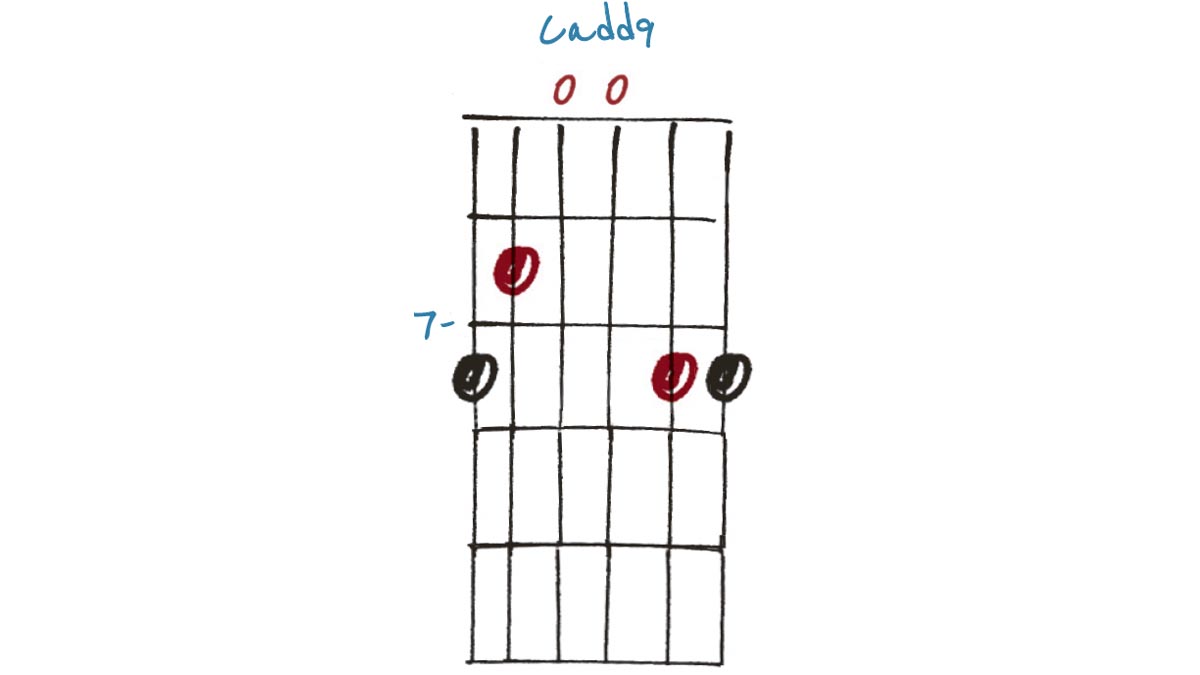
The unusual stacking of notes in this Cadd9 is what you get if you move an open G chord from the 3rd to the 8th fret. If you’ve ever heard La Villa Strangiato, this will be familiar to you. It also appears in Moving by Supergrass and The Pretenders’ 2000 Miles.
Example 3
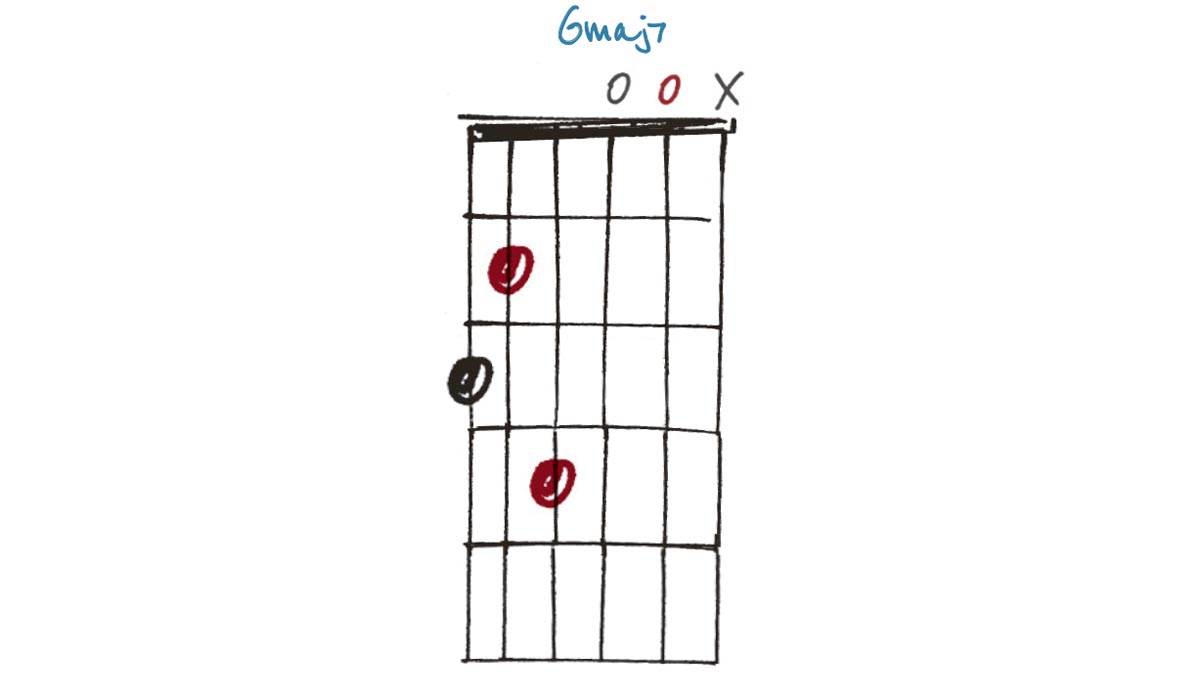
This Gmaj7 is similar to Example 1 but makes use of the open third string, setting a root note directly against the major 7th for a pretty chord but with a certain dissonance. This features heavily on Cygnus X-1 Book II as both a powerchord and delicate arpeggio, as does Example 4…
Example 4
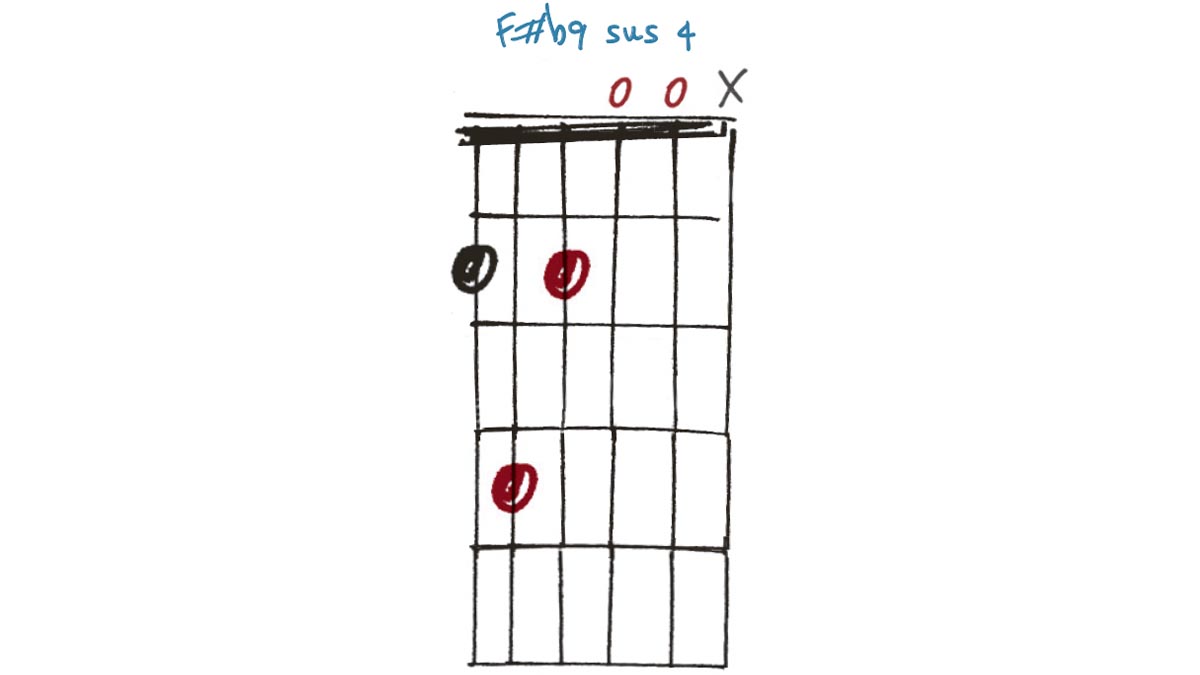
This complex, dissonant chord features alongside Example 3 on the Hemispheres album and is probably most accurately described as an F#7b9sus4. In practice, it’s a sparse fingering of something like an F#m7 with extra open strings.
Alex had cited Paco De Lucía as an influence – not surprising hearing this flamenco-type chord.
Example 5
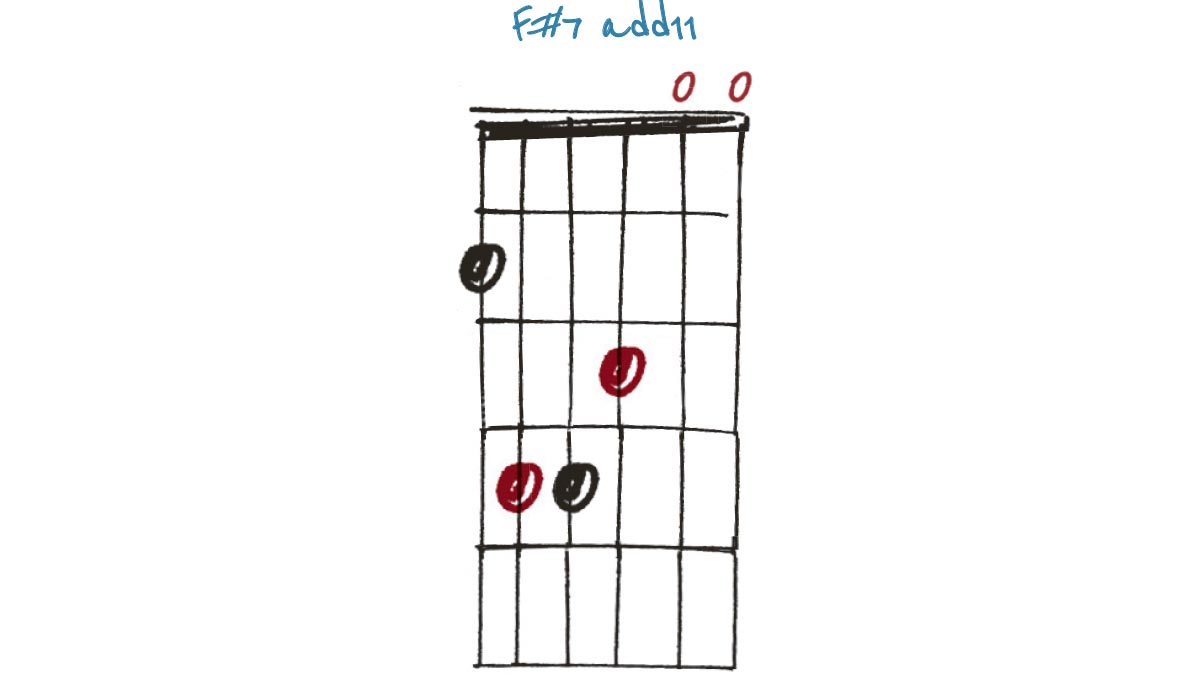
The ‘Hemispheres’ chord: fast catching up with the ‘Hendrix’ chord (E7#9) in legendary status! Alex has used this F#7add11 and ‘open-yet-barre-chord’ approach in many keys/’board positions, but the first repeated chord of the Hemispheres album is the ultimate example. Try leaving the third string open and moving the shape around for further Rush-isms.
Get The Pick Newsletter
All the latest guitar news, interviews, lessons, reviews, deals and more, direct to your inbox!
As well as a longtime contributor to Guitarist and Guitar Techniques, Richard is Tony Hadley’s longstanding guitarist, and has worked with everyone from Roger Daltrey to Ronan Keating.








![Joe Bonamassa [left] wears a deep blue suit and polka-dotted shirt and plays his green refin Strat; the late Irish blues legend Rory Gallagher [right] screams and inflicts some punishment on his heavily worn number one Stratocaster.](https://cdn.mos.cms.futurecdn.net/cw28h7UBcTVfTLs7p7eiLe.jpg)


